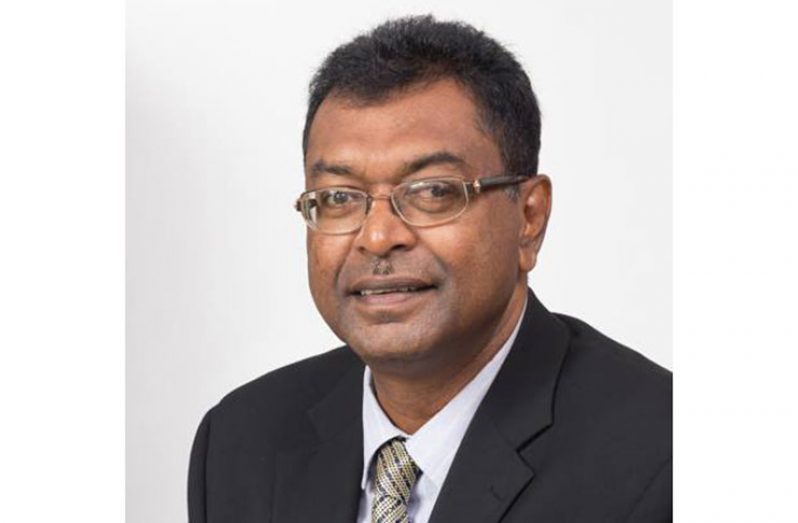–study finds, Ramjattan says situation ‘deeply troubling’
The Guyana Household Drug Prevalence Survey Report 2016, has illustrated disheartening and troubling findings and demands there be increased sensitisation on the effects of the use of licit and illicit drugs here.Minister of Public Security, Khemraj Ramjattan, on Thursday described the findings of the report as “an outrage” at the launch at Cara Lodge, Quamina Street, Georgetown.
The survey’s objectives were to determine the prevalence of psychoactive substances in households in Guyana and to detect the patterns of use of these substances.
“My intention here is not to create a moral panic, but in all honesty, and I wish to repeat words I used at the School Survey launch, these statistics paint a picture which shames us all. It is an outrage! And we must do something about it,” said Ramjattan.
According to the minister, the findings of the survey have been corroborated by statistics presented by the country’s traffic chief which shows that from January 1 to 15, “the cases made out of driving under the influence of alcohol tripled.”
“There was 89 in early 2016. It is now 228 in early 2017,” disclosed Ramjattan. “Drug use among households across the country is a most welcome piece of information any country should want. These cold, hard facts about the state of our households as it relates to households use of licit and illicit drugs, that is tobacco, alcohol, marijuana among others, tells a worrying story. Behind these statistics too we will come to know what we have become, and what we can do about it.”
MARIJUANA
The report indicated that 40 per cent of the respondents believe that it is easy to access marijuana, while 19.8 per cent believe that it is easy to access cocaine, 9.1 per cent believe that ecstasy is easy to access, and 10 per cent of respondents believe that it is easy to access crack.
Meanwhile, the report states that 65.5 per cent of the respondents believe that drug use has increased in Guyana in the past few years, 46.7 per cent believe that drug use will get worse in the future while 56.4 per cent of respondents believe that drug issue is among the core concern of the Government and 92 per cent of those who participated in the survey indicated that they do not know of any drug awareness or prevention programmes in their neighbourhoods.
According to the findings, 21.5 per cent of respondents from Region Three and 24.5 per cent from Region Seven said there is a great deal of drug dealing in their environs.
Alcohol binge drinking is high as statistics show that 64.2 per cent males and females 46.3 per cent of the respondent engage in same.
Meanwhile, Minister Ramjattan linked the use and misuse of drugs to violence and noted that they act as a catalyst for each other. Citing several studies, Ramjattan said drug consumption is linked to drug abuse, delinquency, anti-social behaviour in adulthood and educational failure.
He said the domino effect of drug abuse becomes an “economic burden to the State” as both the health and criminal justice sectors are directly affected.
The Public Security Minister said there are several negative consequences of drug abuse, including mental health problems and behavioural disorders, crime, loss of productivity because of increased absenteeism, loss of life years and lower quality of work, negative consequences on family through unstable and problematic childhood and increased risk of divorce.
Admitting that extensive studies have not been done here on the costs and impacts, the negative consequences cited above from a survey conducted on Norway “must ring a bell and warn us that here in Guyana we too suffer from these adverse consequences and probably even many-times worse.”
WORRYING
“I say so because in this household survey, surprisingly, respondents seldom reported any ill-effects of their drug use. On the contrary, many highlighted what they considered as desired effects of drug use, in particular marijuana use,” the minister stated.
Additionally, he said many respondents associated with a treatment centre noted that the very centre face many challenges including the lack of financial resources to scale-up interventions and treatment, lack of trained specialised human resources and the capacity to monitor patients on treatment to assess progress toward rehabilitation.
In view of the findings, it was recommended that there is a need for regular sensitisation on the harmful effects of licit and illicit drug use and noted that materials developed should cover both the desired effects and the serious consequences associated with drug use.
“Prevention messages should be appropriate for different age ranges and the needs of individual drug users and should provide alternatives to drug use,” he stated.
It was noted too that drug addiction should be of greater priority in health promotion and disease prevention programmes similar to that given to diseases such as HIV/AIDS.
There should be continuous training of persons who have shown an interest in the field of treatment and prevention along with the establishment of more treatment and rehabilitation centres across the country, creation of more recreational centres and spaces for individuals appropriate to the various stages in the life cycle, creation and implementation of mentorship programmes for youths coming from communities and households that display risk factors for illicit drug, increased parental involvement so as to prevent youths from drug use, and there be media campaigns targeting youths, Ramjattan said.
“All of these and much more we have to do. But we must never be daunted by the task at hand. To enjoy this country in a couple of years, mean we must put in the efforts now. I am glad that with studies and surveys like these our efforts will be more clinical, more evidence-based,” said Ramjattan, who noted that the recommendations of the Household Drug Survey will be added to the efforts being made by the Drug Strategy Master Plan 2016 to 2020, which is being executed largely by Customs Anti-Narcotics Unit (CANU) and the Guyana Police Force.
The survey was done in collaboration with the Organisation of American States (OAS) and the Inter American Drug Abuse Commission and followed a major survey of drug use among secondary school students which was launched in 2015.




.jpg)










